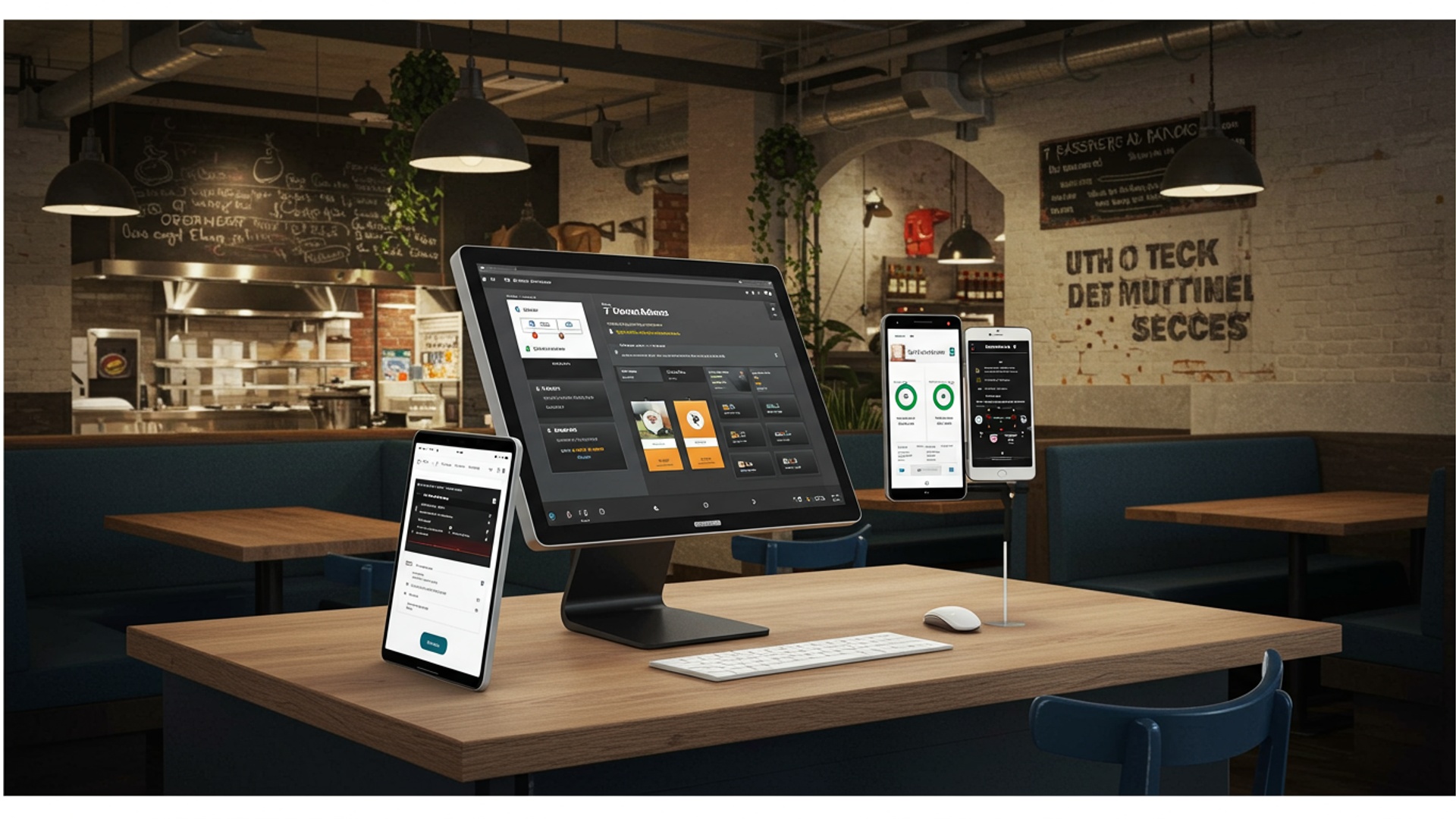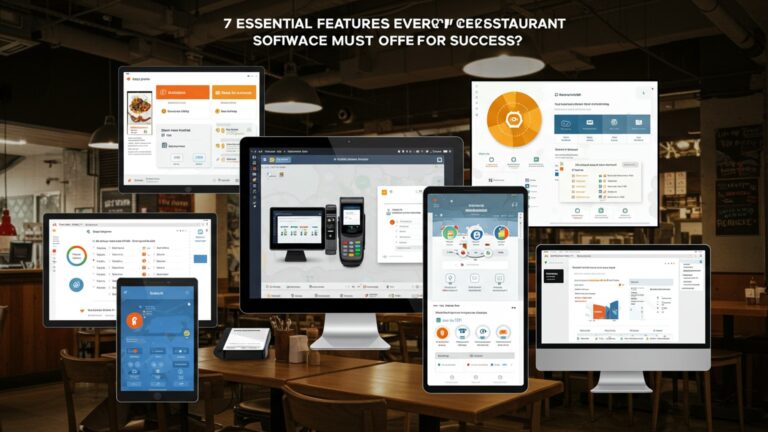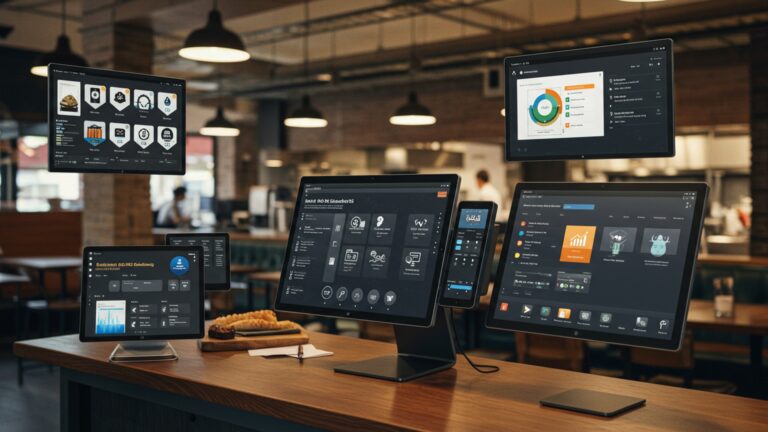7 Essential Features Your Restaurant POS Software Must Have for Success
The modern restaurant landscape demands more than just a basic till; it requires a sophisticated operational backbone. As consumer expectations rapidly evolve towards seamless digital experiences, from QR-code table ordering to integrated delivery platforms, your restaurant POS software now functions as the central nervous system for your entire establishment. Obsolete systems create costly bottlenecks during peak dining hours, lead to critical inventory discrepancies. fundamentally hinder data-driven decision-making. Today’s competitive environment, further shaped by the rapid adoption of contactless technologies and real-time analytics, necessitates a POS that not only processes transactions efficiently but also offers robust management tools, streamlines kitchen communications. integrates effortlessly with third-party services. Success in this fast-paced industry increasingly hinges on leveraging technology that truly optimizes every facet of your operation, directly impacting profitability and guest satisfaction.

1. Seamless Order Management and Customization
At the heart of any successful food service operation is efficient order taking and processing. Your Restaurant POS software isn’t just a glorified cash register; it’s the central nervous system for your front-of-house operations. A truly essential feature is a robust order management system that allows staff to quickly and accurately take orders, whether it’s dine-in, takeout, or delivery.
- Intuitive Interface: The software should be easy to learn and use, minimizing training time for new staff and reducing errors during peak hours. Think drag-and-drop table layouts or clearly categorized menu items that are visually easy to navigate.
- Menu Customization: Restaurants thrive on offering variety and personalization. Your POS must support complex menu structures, including modifiers (e. g. , “extra cheese,” “no onions,” “gluten-free bun”), special instructions, combo meals. daily specials. For example, a customer might order a “build-your-own burger” with specific toppings and cooking preferences; the Restaurant POS software should handle this seamlessly and relay it accurately to the kitchen display system (KDS).
- Split Checks and Transfers: In a busy dining environment, guests often request to split checks by item or by person, or transfer orders between tables or servers. A capable Restaurant POS software facilitates these common requests without fuss, enhancing customer experience and operational fluidity.
Consider the scenario at “The Urban Spoon,” a popular brunch spot. Before upgrading their Restaurant POS software, splitting a check for a large group could take minutes, causing bottlenecks and frustrating customers. Their new system, But, allows servers to tap items and assign them to different payers in seconds, drastically improving table turnover and server efficiency during their busiest hours.
2. Integrated Inventory Management
Controlling costs is paramount in the restaurant industry. food waste or inefficient purchasing can quickly erode profits. An integrated inventory management system within your Restaurant POS software is not just a nice-to-have; it’s a necessity for sustained success. This feature tracks every ingredient from receipt to sale, providing real-time data on stock levels.
- Real-time Tracking: Know exactly what you have in stock at any moment. This prevents over-ordering perishable goods and ensures you never run out of a popular ingredient during service. For instance, if you sell a burger, the system automatically deducts one patty, one bun, a specific amount of cheese. so on, from your inventory.
- Automated Reorder Alerts: Set par levels for critical ingredients. When stock drops below these predefined thresholds, the Restaurant POS software can automatically generate reorder suggestions or send alerts, streamlining your purchasing process and preventing stockouts.
- Waste Reduction & Cost Control: By accurately tracking consumption and waste, you can identify inefficiencies, adjust portion sizes, or optimize your menu. This level of detail helps pinpoint where your money is going and where you can save.
- Supplier Management: Some advanced systems allow you to manage supplier data, pricing. even integrate directly for automated order placement, further simplifying the supply chain.
Take “Pizzeria Pronto,” for instance. Their old manual inventory system led to frequent over-ordering of fresh produce and occasional shortages of specialty cheeses. After implementing a Restaurant POS software with integrated inventory, they reduced food waste by 15% in the first quarter and optimized their ordering schedule, saving thousands annually. This feature is crucial for maintaining healthy profit margins.
3. Robust Reporting and Analytics
Running a successful restaurant in today’s competitive landscape requires more than just good food and service; it demands data-driven decision-making. Your Restaurant POS software should be a powerful analytical tool, providing comprehensive reports that offer actionable insights into every aspect of your business.
- Sales Trends: assess sales by hour, day, week, or month to identify peak periods, slow times. overall revenue patterns. This helps optimize staffing and marketing efforts.
- Item Performance: interpret which menu items are your best sellers and which are underperforming. This insights is invaluable for menu engineering, allowing you to refine offerings, adjust pricing. maximize profitability.
- Labor Costs: Track labor costs in relation to sales, helping you schedule staff more efficiently and manage your payroll budget effectively.
- Customer Data: Combined with CRM features, reporting can show you what your loyal customers prefer, average spend. visit frequency.
A basic POS might give you a daily sales total. a truly effective Restaurant POS software goes much deeper. Consider the following comparison:
| Report Type | Basic POS Report | Advanced Restaurant POS Software Analytics |
|---|---|---|
| Sales Overview | Daily gross sales, total transactions. | Hourly sales trends, sales by server, sales by payment type, average check size, sales per square foot. |
| Menu Performance | Top 10 selling items by quantity. | Profitability of each item (food cost vs. selling price), sales mix, item modifiers analysis, cross-selling insights. |
| Labor Analysis | Total hours worked, total payroll. | Labor cost percentage of sales, staff performance metrics, overtime tracking, employee productivity. |
| Inventory Insights | Stock levels for key items. | Ingredient usage rates, waste reports, vendor performance, cost of goods sold (COGS) analysis. |
These advanced analytics allow restaurant owners to move beyond guesswork, making informed decisions on everything from menu adjustments to marketing campaigns, ultimately driving greater success.
4. Customer Relationship Management (CRM) & Loyalty Programs
In an increasingly competitive market, retaining customers and fostering loyalty is as crucial as attracting new ones. A Restaurant POS software with integrated CRM and loyalty features transforms transactions into opportunities for relationship building, turning first-time visitors into regulars.
- Customer Data Capture: Easily collect customer details such as names, email addresses, birthdays. even dining preferences (e. g. , favorite dishes, allergies). This data can be gathered during online ordering, loyalty sign-ups, or directly at the POS.
- Personalized Marketing: Use the collected data to segment customers and send targeted promotions. Imagine sending a birthday discount to a customer or a special offer on their favorite wine. This level of personalization significantly increases engagement.
- Loyalty Programs: Implement points-based systems, tiered rewards, or special discounts for frequent visitors. These programs encourage repeat business and make customers feel valued. The Restaurant POS software should automatically track points earned and redeemed.
- Gift Card Management: Seamlessly sell, track. redeem physical or digital gift cards, which are excellent tools for attracting new customers and boosting sales.
Consider “Café Bliss,” a local coffee shop. By leveraging their Restaurant POS software’s CRM, they launched a loyalty program that gives customers a free coffee after every ten purchases. They also use the system to send personalized email promotions on new pastry items to customers who previously bought similar baked goods. This approach led to a 20% increase in repeat customer visits and a noticeable bump in average transaction value, demonstrating the power of knowing your customer.
5. Flexible and Secure Payment Processing
The speed and security of payment processing can significantly impact customer satisfaction and your restaurant’s bottom line. Your Restaurant POS software must offer flexible and secure options to accommodate every customer’s preferred payment method, ensuring smooth and reliable transactions.
- Diverse Payment Options: Support for credit and debit cards (Visa, MasterCard, Amex, Discover), contactless payments (NFC like Apple Pay, Google Pay), mobile wallets. even QR code payments. This caters to a broader customer base and modern payment preferences.
- EMV Compliance: EMV (Europay, MasterCard. Visa) chip cards are the global standard for secure payments. Your POS system must be EMV compliant to protect against fraud and shift liability away from your business in case of a fraudulent transaction.
- PCI DSS Security: Payment Card Industry Data Security Standard (PCI DSS) compliance is crucial. This refers to a set of security standards designed to ensure that all companies that process, store, or transmit credit card insights maintain a secure environment. A robust Restaurant POS software integrates with payment processors that adhere to these strict standards, protecting both your business and your customers’ sensitive data.
- Integrated vs. Standalone Processing: An integrated system means your POS directly communicates with the payment terminal, automatically sending transaction amounts. Standalone terminals require manual entry. Integrated solutions are faster, reduce errors. simplify end-of-day reconciliation.
The transition to integrated payment processing with a modern Restaurant POS software can dramatically streamline operations. For example, a server at “The Bistro” can take an order on a handheld device, process payment right at the table using a wireless terminal. send the receipt via email – all within moments. This not only speeds up service but also enhances the perceived professionalism and convenience for the customer.
6. Employee Management and Scheduling
Your staff are the backbone of your restaurant. Efficiently managing their time, roles. performance is critical for smooth operations and excellent customer service. A comprehensive Restaurant POS software should include robust employee management features that simplify daily tasks and help optimize your team.
- Time Clock Functionality: Allow employees to punch in and out directly through the POS system. This eliminates manual time cards, reduces payroll errors. provides accurate labor data for reporting. Some systems even offer biometric authentication to prevent “buddy punching.”
- Role-Based Access Control: Not every employee needs access to every function of the POS. This feature allows you to define different permission levels for hosts, servers, bartenders, managers. owners, ensuring data security and preventing unauthorized actions (e. g. , discounts, voids).
- Performance Tracking: Monitor individual server sales, average check size, tips earned. customer feedback. This data can be invaluable for training, performance reviews. recognizing top performers.
- Tip Management: Simplify tip pooling and distribution, ensuring fair and accurate payouts to your team.
- Scheduling Integration: While sometimes a separate module, many advanced Restaurant POS software solutions integrate with or offer their own scheduling tools, allowing you to create and manage staff rotas based on forecasted sales and employee availability directly within the system.
Imagine a busy restaurant like “The Daily Grind.” Before implementing a POS with integrated employee management, calculating payroll and managing staff schedules was a complex, time-consuming task for the owner. With the new Restaurant POS software, accurate time tracking is automated, role permissions ensure security. sales performance reports help identify training needs, ultimately leading to a more engaged and efficient workforce.
7. Table Management and Floor Planning
Optimizing your restaurant’s floor space and ensuring smooth table turnover is crucial for maximizing revenue, especially during peak hours. A sophisticated Restaurant POS software includes table management and floor planning features that give you a bird’s-eye view of your dining area and empower your staff to provide superior service.
- Visual Floor Plan: A digital, interactive representation of your restaurant’s layout allows staff to see which tables are open, seated, have ordered, are waiting for food, or are ready for payment. This makes seating guests and managing flow intuitive.
- Table Status Tracking: Instantly know the status of every table. Is it seated? Has the order been sent to the kitchen? Is it waiting for payment? Is it dirty and needs clearing? This real-time insights helps hosts seat guests more efficiently and allows servers to manage their sections better.
- Server Assignment: Assign tables or sections to specific servers, simplifying order routing and ensuring accountability. This also helps balance workloads among staff.
- Reservations Integration: Many advanced Restaurant POS software systems integrate with online reservation platforms, allowing you to manage bookings directly from your POS, optimize seating. even anticipate peak demand.
- Waitlist Management: For restaurants that don’t take reservations, a digital waitlist feature helps manage queues efficiently, providing accurate wait times and notifying guests when their table is ready.
Consider “The Grand Dining Room,” a high-end restaurant where maximizing table turnover without rushing guests is an art. Their Restaurant POS software with advanced table management allows the host to see which tables are approaching the end of their meal, coordinate with the bus staff for timely clearing. seat the next reservation seamlessly. This precision ensures that every minute of service is optimized, leading to higher revenue and a consistently excellent dining experience for every guest.
Conclusion
Choosing the right POS isn’t merely about processing transactions; it’s about laying a robust foundation for your restaurant’s operational excellence and future growth. Having explored these seven essential features, the real takeaway is to view your POS as a strategic partner, not just a tool. From my own experience, I’ve seen firsthand how a well-integrated inventory management feature can slash food waste by 15-20%, or how a seamless online ordering system, especially post-pandemic, has become non-negotiable for capturing new revenue streams. Modern POS systems, with their advanced analytics and CRM capabilities, are no longer just tools but powerful data hubs, enabling smarter menu engineering and personalized customer experiences – a critical differentiator in today’s competitive market. So, don’t just settle. Take the time to meticulously evaluate solutions against your unique operational flow and growth ambitions. My personal tip? Prioritize scalability and stellar support alongside the core features. For a deeper dive into selection, consider these crucial steps for choosing the right restaurant POS. This strategic choice isn’t just an expense; it’s an investment that will empower your team, delight your customers. ultimately drive sustainable profitability.
More Articles
How to Choose the Right Restaurant POS 6 Crucial Steps for Success
Avoid These 6 Common Mistakes When Implementing New Restaurant POS Software Solutions
10 Essential Restaurant POS Features Every Owner Needs to Master
The Ultimate Guide 8 Key Benefits of Modern Restaurant POS Software
Learn 8 Best Practices for Maximizing Your Restaurant POS System Investment Today
FAQs
What’s the biggest game-changer a good restaurant POS offers?
A truly great restaurant POS system transforms your entire operation by streamlining order taking, payment processing. kitchen communication. It drastically reduces errors, speeds up service. frees your staff to focus more on hospitality, ultimately boosting customer satisfaction and your bottom line.
How does a POS make taking orders smoother for my staff and guests?
It makes order management a breeze! Your staff can quickly take orders tableside on mobile devices, send them directly to the kitchen display system (KDS) or printers, split bills easily. manage tables efficiently. This means faster service, fewer mistakes between front and back of house. a much better experience for customers.
Can a modern POS system handle all the different ways customers want to pay these days?
Absolutely. A must-have feature is robust payment processing that supports everything from credit and debit cards to mobile payments, contactless options. even gift cards. It should also simplify splitting checks and applying discounts, making checkout quick and hassle-free for everyone.
Is keeping track of ingredients and supplies easier with this software?
Definitely. An essential POS feature is real-time inventory management. It helps you monitor ingredient levels, track waste, manage suppliers. even forecast needs, preventing stockouts of popular items and reducing food costs significantly. No more manual counting or guessing!
How can a POS help me build a stronger relationship with my regular customers?
Look for a POS with integrated CRM and loyalty program capabilities. This allows you to collect customer data, track their preferences, offer personalized promotions. manage loyalty points or rewards. It’s fantastic for encouraging repeat business and making your guests feel valued.
What kind of insights can I get from a POS to actually grow my business?
Powerful reporting and analytics are key. A good POS provides detailed data on sales trends, popular menu items, peak hours, staff performance. even profit margins. These insights are invaluable for making informed decisions about your menu, staffing, marketing. overall strategy to boost profitability.
Do I really need my POS to talk to my other restaurant apps, like delivery services?
Yes, third-party integrations are super crucial for modern restaurants! Your POS should seamlessly connect with online ordering platforms, food delivery apps, accounting software. payroll systems. This eliminates manual data entry, reduces errors. creates a more efficient, unified operation across all your digital tools.




